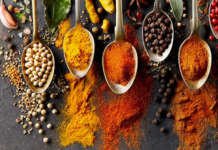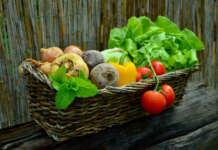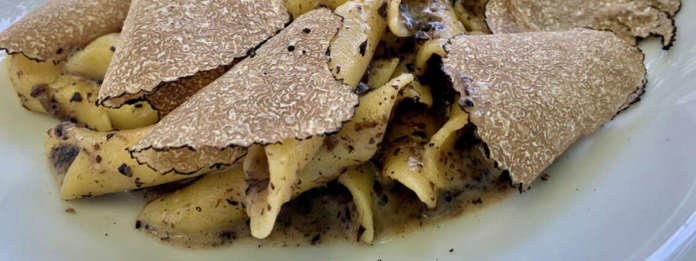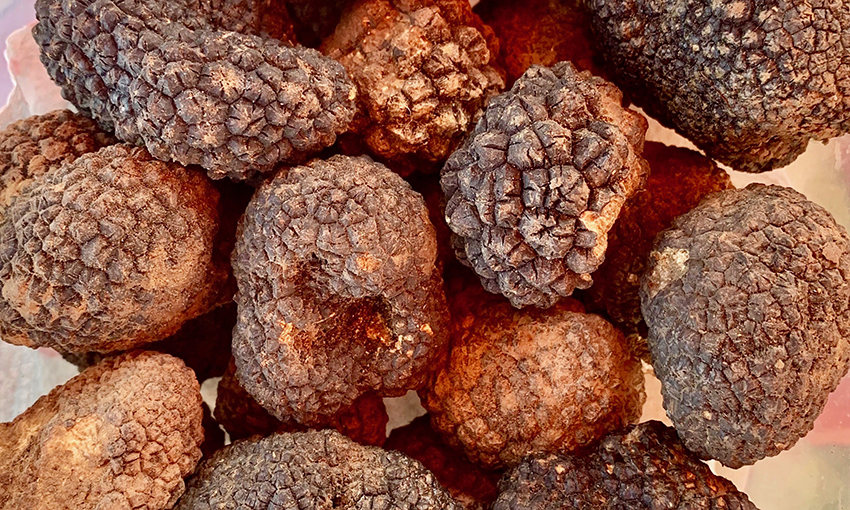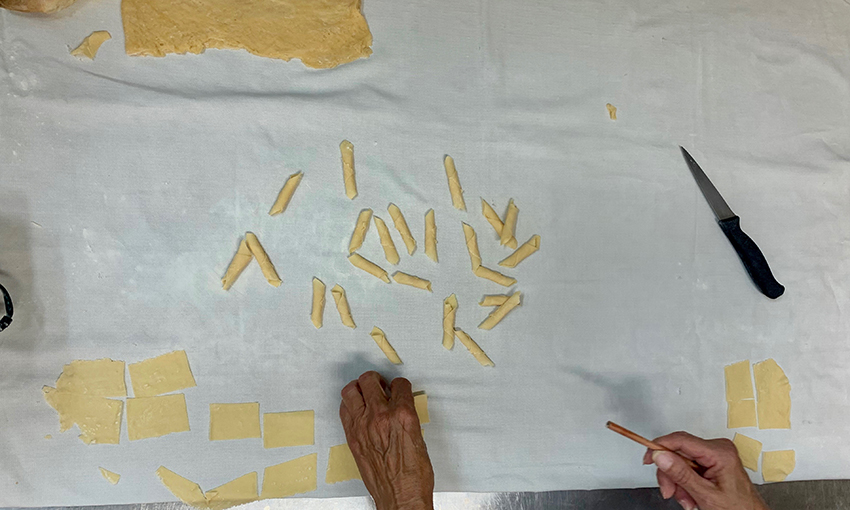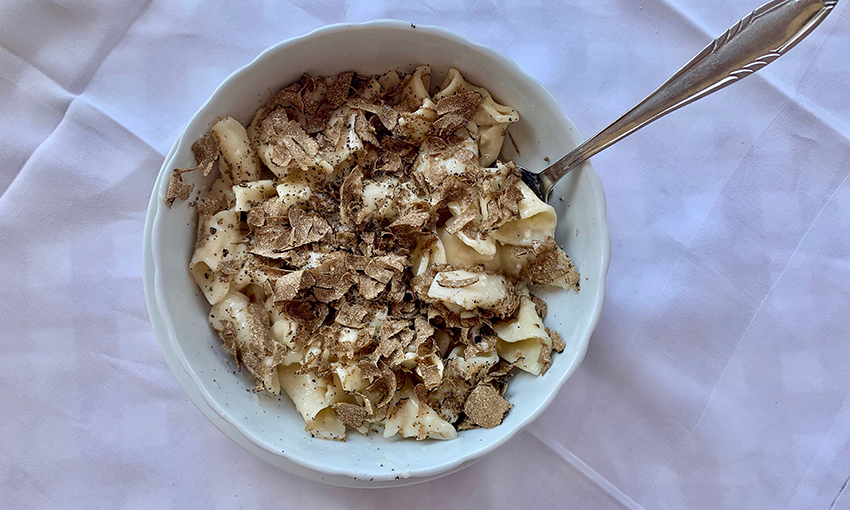Index
You say Istria, you think Croatia. But no, there is a whole wonderful Slovenian part, which in most cases you only cross to go further south, towards the Croatian coast. In doing so, we lose a magnificent land, of continuous borders and influences, even at the table, as one of the symbols of Istrian cuisineI melted with truffles, which we will talk about today, also thanks to the meeting with the young cook Sarah Vuk Brajko of the Bottega dei Sapori di Pirano.
Slovenian Istria and Istrian cuisine
Istria is a complex land. Contention, crossed. And even if this is not the place to retrace the historical events he experienced, the passages that have taken place are certainly evident, from the language (they all speak at least two, Italian and Slovenian), to Venetian Gothic architecture, up to to his kitchen. Today, this fascinating territory, between the Gulf of Trieste, the Julian Alps, the Dinaric Alps and the Kvarner Gulf, is divided into three states from an administrative point of view. Most belong to the Croatia, an area known for fishery, in particular of scampi, turbot, razor clams, scallops, scallops, sea bass, but also molluscs and so on; the Croatian fish, in fact, is one of the most widespread there is, even in Italy. Then there is a small part Italian company, in the municipalities of San Dorligo della Valle and Muggia, but we remember that Istria has long been part of Italy: the dominion of the Serenissima, which can be clearly seen in various fields, lasted for more than five hundred years, until the dissolution of Napoleon in 1797, when the Republic fell. For this, as Sarah explains, “Istrian cuisine suffers a lot of Venetian influence; in the Piranese tradition, for example, there are many dishes, which I also always make in my restaurant, such as sarde in saor, creamed cod, or pasta in general, here in the fuži format ”. And finally, there is Istria Slovenian, Slovenian Istra, which includes the coastal towns of Piran (where Sarah's restaurant is located), Ankaran, Izola, Portoroz and Koper with their surprising inland areas, far less traveled and touristy. And it is precisely here, in the hinterland, that one of the symbols of the area is produced: the truffle.
Istrian truffle, an ingredient available all year round
We all agree that in this particular historical moment it is good to support the Italian agri-food sector and therefore all its productions, even better if small, since we are lucky enough to have them in abundance. Having said that, it seems fair to tell you about the existence and possibility of an alternative just a few kilometers away from the border, in a land to which we have been historically linked for centuries as we have seen. Also because we are talking about a product as valuable and expensive as it is rare, not always easy to find. In Istria, on the other hand, Sarah explains us, the truffle it is present all year round, in different varieties according to the seasons:
- from September to December (peaking in November usually) is the autumn truffle, the white one Magnatum Pico, which has a much more intense taste and is considered the best. It is a variety similar to that of Alba, also because Piran is located on the same meridian, and as some may already know, the growth of the truffle depends precisely on the meridian belt of a territory.
- From December to January, or even February in the lucky years, you find that fine black winter: dark brown in color, with a very intense taste, quite sweet. This is the type that lasts less time.
- From February to May there is that vernal, considered the least good, black outside but white inside.
- From May to Septemberfinally, it is time for the truffle Summer, the one more commonly known as scorzone.
Thanks to its availability throughout the year, the truffle is very present in Istrian cuisine. In fact, you will often find it in various dishes, such as in the omelette, or with cheeses and fish, especially on the coast. But the most common combination, as well as the gastronomic symbol of Istria, remains one: the fusi with the truffle, so much so that they are also called "Istrian".
Istrian fusi (or fuži) with truffles, or "Istrian"
Finding spindles with truffles in Istria is not at all difficult, on the contrary; almost all restaurants, or in the gostilnice (Istrian taverns), they make them. Another thing, however, is to eat this dish prepared to perfection, that is, with fresh pasta and a well-made sauce only of truffles, without adding other ingredients, such as, alas, cream or philadelphia. But what exactly are spindles? THE fuzhi, as they are called in Slovenian, they are a pasta shape that is very reminiscent of garganelli, with the difference that the latter are made with a special tool, the comb, or the ricciagnocchi (or gnocchi line), in order to give those characteristic lines, absent from the Istrian type, for which instead a thin stick of wood. In fact, Sarah always tells us, in the past the ladies used the finger, for this the spindles were bigger. Furthermore, they are not shared with the truffle, but with a tomato sauce and rooster, or with the gulash (yet another influence from Central Eastern and Central Europe on Istrian cuisine). In fact, Sarah continues, truffles have been harvested for a long time, but their use in cooking is recent in Istria. It is only since the XNUMXs that the variant of the spindles with the truffle spread so much also in the rest of Slovenia, in particular on the border with Italy. In these parts you will find a noteworthy version of the Gostilnica Mandrija of Nova Gorica. But basically we recommend, at least the first time, to eat them in Istria, giving you two alternatives: one in the inner part and one on the sea.
Where to eat spindles with truffles in Slovenian Istria, inland and by the sea
In the hinterland of Slovenian Istria an obligatory stop is the Belvedur restaurant of Gracisce, which is located right in the heart of the truffle area, the one that goes from Buttari to Inhabitants (a wonderful town where only six people live, a destination for artists and painters for years). At Belvedur you will find one of the most authentic and homemade versions of fuži: strictly handmade, a little larger than usual, seasoned with the truffles collected by them and served in a very generous portion (see photo, for example, I was not able to finish them even though they were delicious). Here the truffle is also paired with fresh cheese, usually ricotta of their own production, to try as an appetizer.
If, on the other hand, you prefer to enjoy the time zones on the sea, you should definitely go to Piran, for different reasons. First of all because it is a beautiful city, it is no coincidence that it is one of the main tourist destinations in Slovenia, characterized by an elliptical shape that seems to be drawn on the sea (pay attention to the shapes that the stones have along the coast), as well as being the birthplace of great violinist Giuseppe Tartini. And then because right in the central square dedicated to him, there is The Bottega dei Sapori, one of the best places to try this specialty. And it could not be otherwise given that this place was born seven years ago with the great chef Sergio Vuk, Sarah's father, who worked as a cook for more than fifty years, passing on his deep passion to his daughter, who now runs the business together with her husband Adam, in the dining room. Their cuisine is all a tribute to the territory of Slovenian Istria: from various fish dishes such as Piranese soup (yet another version of broth who continues his tour!), with sardines in saor, up to the usual classics such as spindles with truffles, of which we give you Sarah's recipe.
The recipe for spindles with truffles
While waiting to go directly to his shop or to wander around fuži in Slovenian Istria, you can try to prepare this dish at home. You can also proceed by making some variations, such as using the truffle you have available in your area, or replacing the pasta format with another one you like.
Ingredients for people 6
- 500 g of 00 flour
- 5 eggs
- 1 tablespoon of seed oil
- 6 g salt
- 50 g butter
- meat broth to taste
- truffle (at will, it's never enough!)
Method
- Mix flour, eggs, oil and salt as for the classic fresh pasta and let the dough rest in a plastic bag for about 1 hour.
- Then roll out the dough into a very fine sheet, cut it into a square shape of about 2 × 2 cm each and then roll each square onto a wooden stick the thickness of a pencil from tip to tip squeezing in half, as if they were garganelli.
- Once the pasta is ready, boil the water and cook for about 2-5 minutes, time that can vary according to the size and thickness of the spindles. So to be safe, try them before you drain!
- Meanwhile, heat a knob of butter in a saucepan and add the grated truffle; heat it only slightly, adding broth.
- When the pasta is cooked, add a little more cold butter to cream and finally served with grated truffle or cut on top in abundance.
It goes without saying that this dish goes divinely with a glass of Malvasia, the Istrian grape par excellence.
And you, have you ever tried this delight?
Article Slovenian Istria in a dish: the recipe for spindles (or fuži) with truffles seems to be the first of Food Journal.





